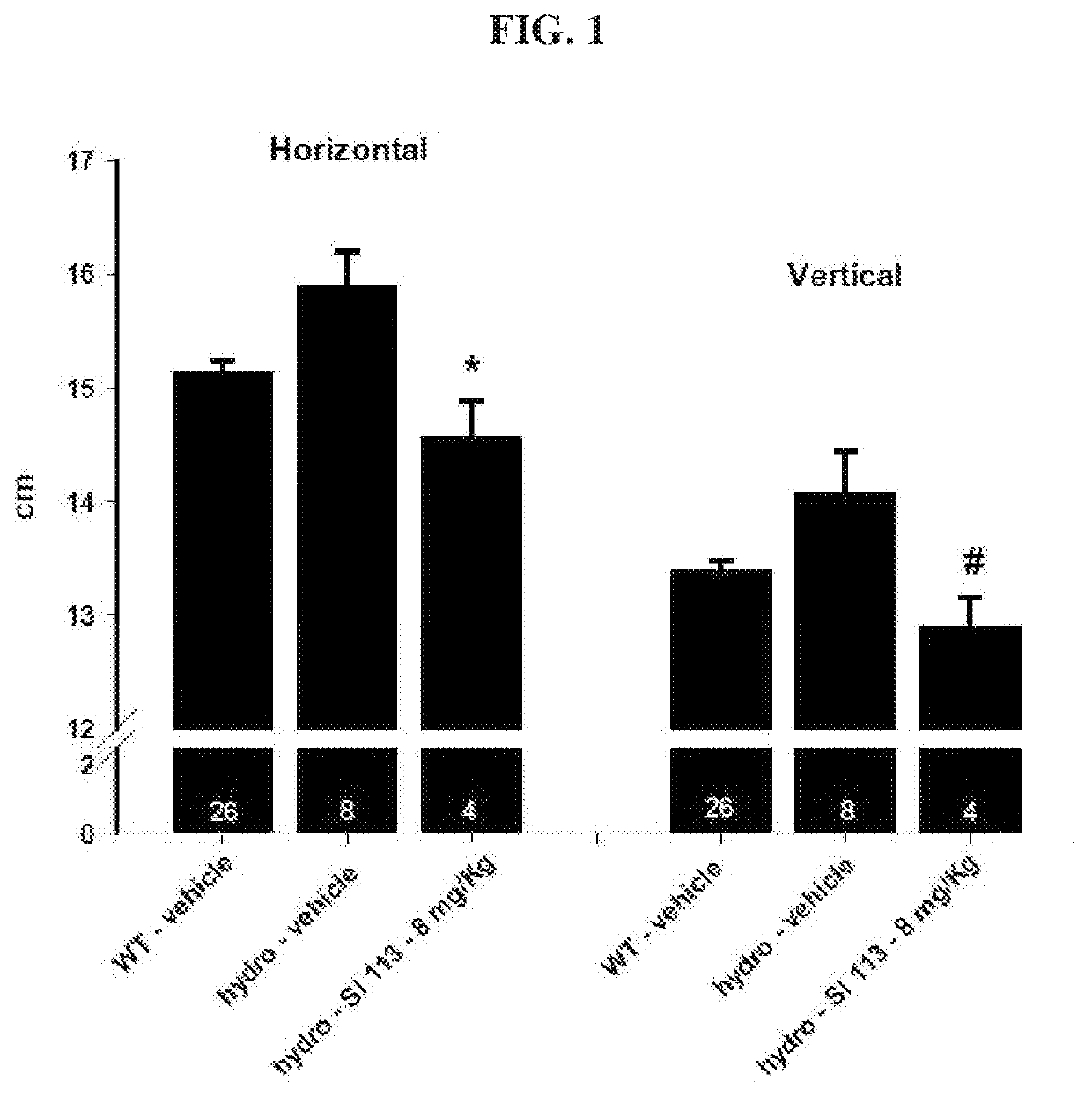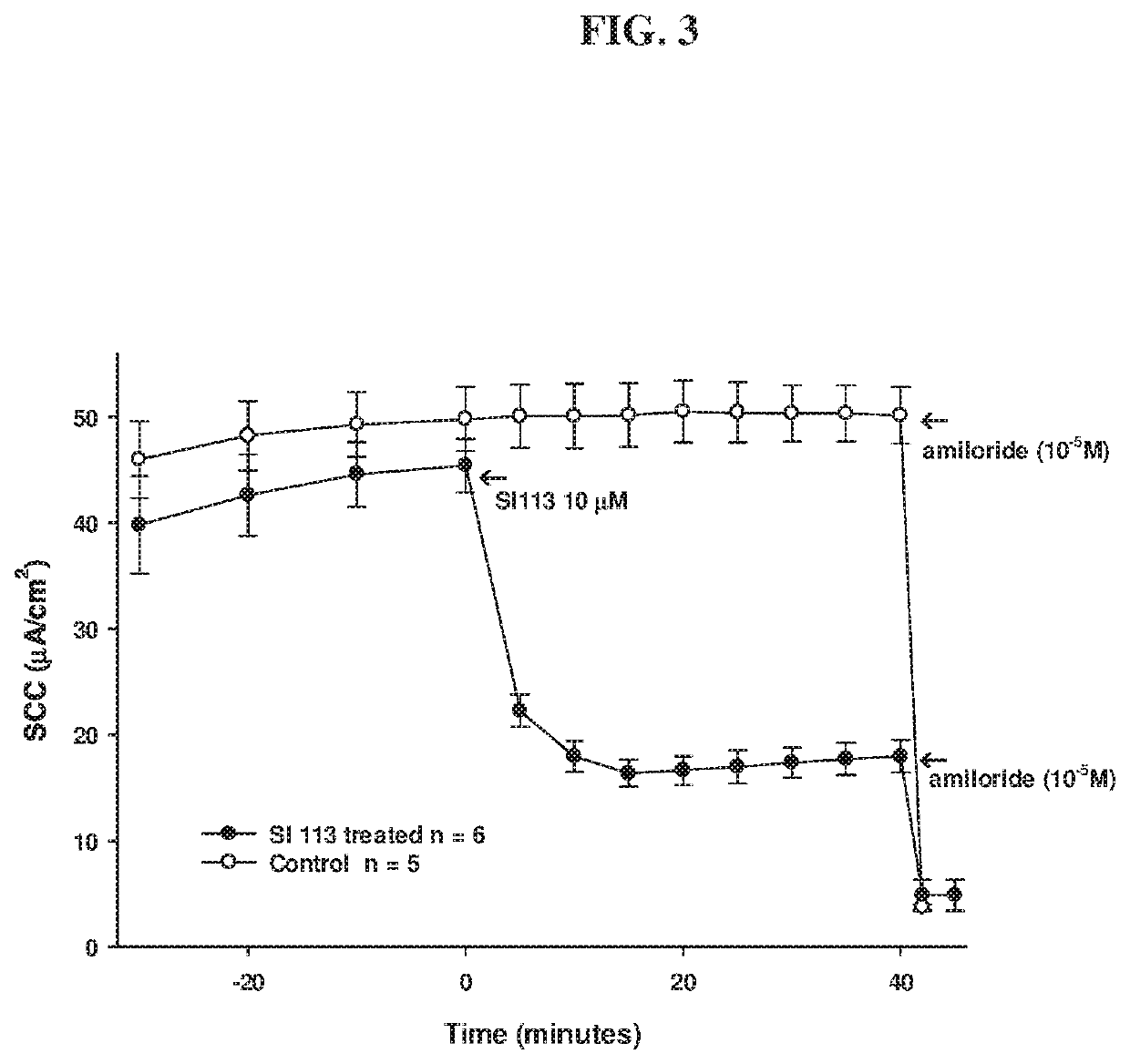Methods of inhibiting serum glucocorticoid induced kinase 1 (SGKI) as a treatment for salt and water balance diseases
a technology of salt and water balance and kinase 1 is applied in the field of inhibiting serum glucocorticoid induced kinase 1 (sgk1) for treating diseases, which can solve the problems of blindness or death, all surgical procedures carry well-defined risks, and development delay, so as to reduce the development of diseases, inhibit the production of cerebrospinal fluid, and inhibit the transepithelial ion transport
- Summary
- Abstract
- Description
- Claims
- Application Information
AI Technical Summary
Benefits of technology
Problems solved by technology
Method used
Image
Examples
example 1
[0035]In this Example, the effects of the SGK1 inhibitor, SI 113, in a hydrocephalic animal model were analyzed.
[0036]The effectiveness of SI 113 was tested in a genetic model of hydrocephalus, the Wpk rat model. In this model, the homozygous animals (TMEM67− / −) carry a single point mutation in TMEM67, one of a complex of proteins involved in the formation of the primary cilium. The homozygous affected animals have severe hydrocephalus and renal cystic disease. They typically survive for 18-21 days after birth, and the developing hydrocephalus can be monitored by measuring the head size in a manner analogous to measuring head sizes in human children.
[0037]In FIG. 1, the head sizes in both the horizontal and vertical dimensions are shown. Particularly, at post-natal day 15, hydrocephalic (hydro) animals treated with vehicle only had significantly larger head dimensions than the vehicle treated wild type (WT) animals. Treatment with SI 113 from post-natal day 7 to post-natal day 15 si...
example 2
[0038]In this Example, the effects of SI 113 pretreatment on TRPV4 agonist stimulation in the PCP-R porcine choroid plexus cell line were analyzed.
[0039]PCP-R (porcine choroid plexus, high resistance) cell line was grown to confluence on permeable Transwell supports. The PCP-R cell line is grown in tissue culture media consisting of Dulbecco's Minimal Essential media (DMEM) supplemented with 10% fetal bovine serum and penicillin (100U / ml) and streptomycin (100 ng / ml). Cultured cells in both flasks and on Transwells had the media changed thrice weekly. After attaining a high resistance phenotype (days 10-12 after seeding on the Transwells), the cultures were removed from the plastic supports and mounted in an Ussing chamber for electrophysiological measurements (short-circuit current (SCC)) of net transepithelial ion transport. A negative deflection is indicative of anion absorption (CSF to blood) and / or cation secretion (blood to CSF). GSK1016797 is an agonist of TRPV4, an osmo- and...
example 3
[0040]In this Example, the effects of SI 113 on ENaC in a renal cell line were analyzed.
[0041]The mouse cortical collecting duct (mCCD) cell line is a continuous, high resistance cell line that has the characteristics of the principal cells that line the kidney distal tubules. In this segment of the tubules, a transport protein, the epithelial sodium channel (ENaC), is responsible for the reabsorption of sodium from the kidney filtrate and the return of this ion to the bloodstream. As the concentration of sodium increases in the blood, the increased osmotic concentration will cause a compensatory movement of water from cells all over the body into the blood and an increase in blood volume and blood pressure. ENaC is an important transport protein and its function plays a major role in the regulation of whole body salt and water balance. Increases in the activity of ENaC can cause hypertension and many hypertension medications target the intracellular signaling pathways that culminat...
PUM
| Property | Measurement | Unit |
|---|---|---|
| body weight | aaaaa | aaaaa |
| Thickness | aaaaa | aaaaa |
| osmotic movement | aaaaa | aaaaa |
Abstract
Description
Claims
Application Information
 Login to View More
Login to View More - R&D
- Intellectual Property
- Life Sciences
- Materials
- Tech Scout
- Unparalleled Data Quality
- Higher Quality Content
- 60% Fewer Hallucinations
Browse by: Latest US Patents, China's latest patents, Technical Efficacy Thesaurus, Application Domain, Technology Topic, Popular Technical Reports.
© 2025 PatSnap. All rights reserved.Legal|Privacy policy|Modern Slavery Act Transparency Statement|Sitemap|About US| Contact US: help@patsnap.com



